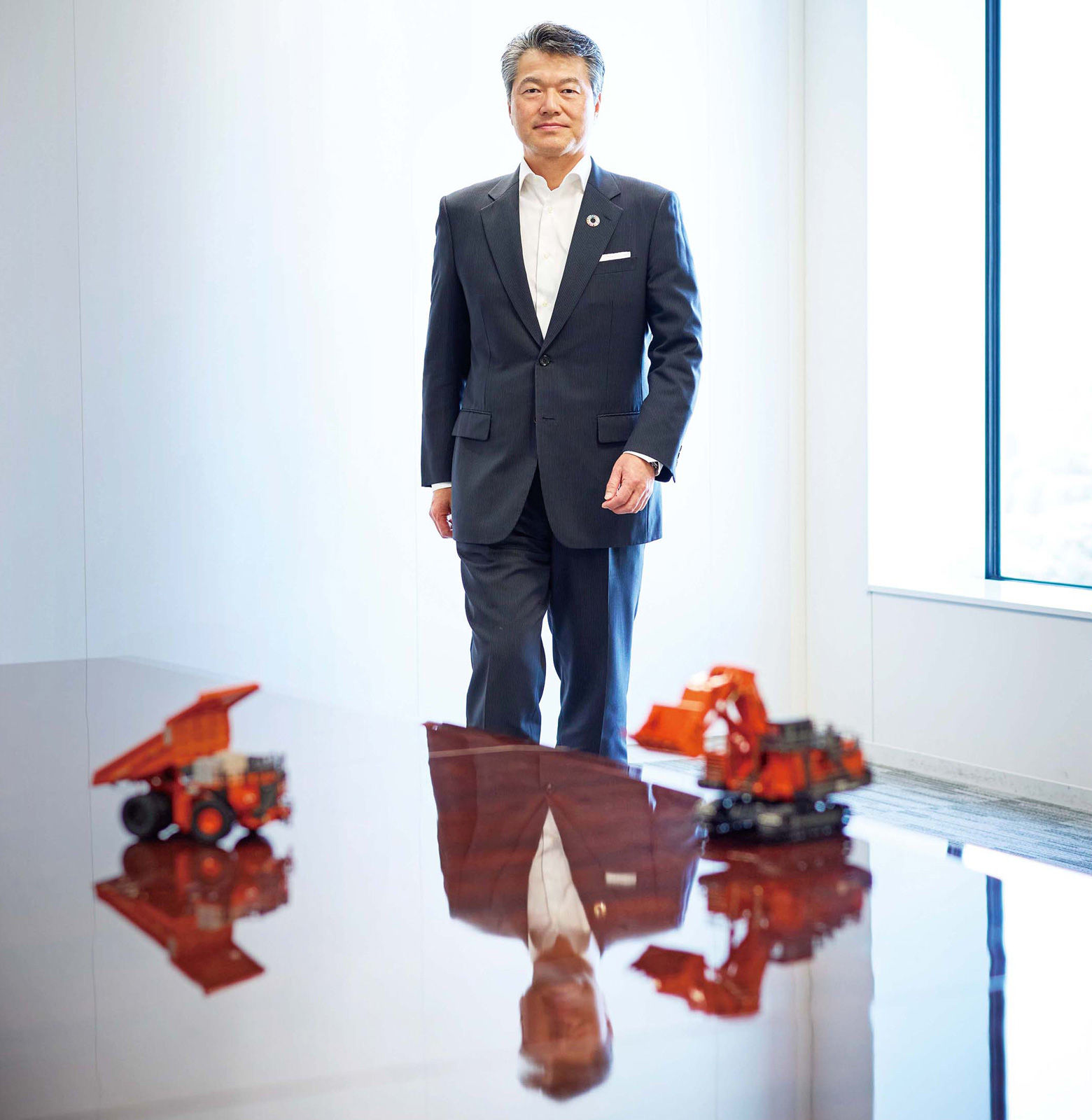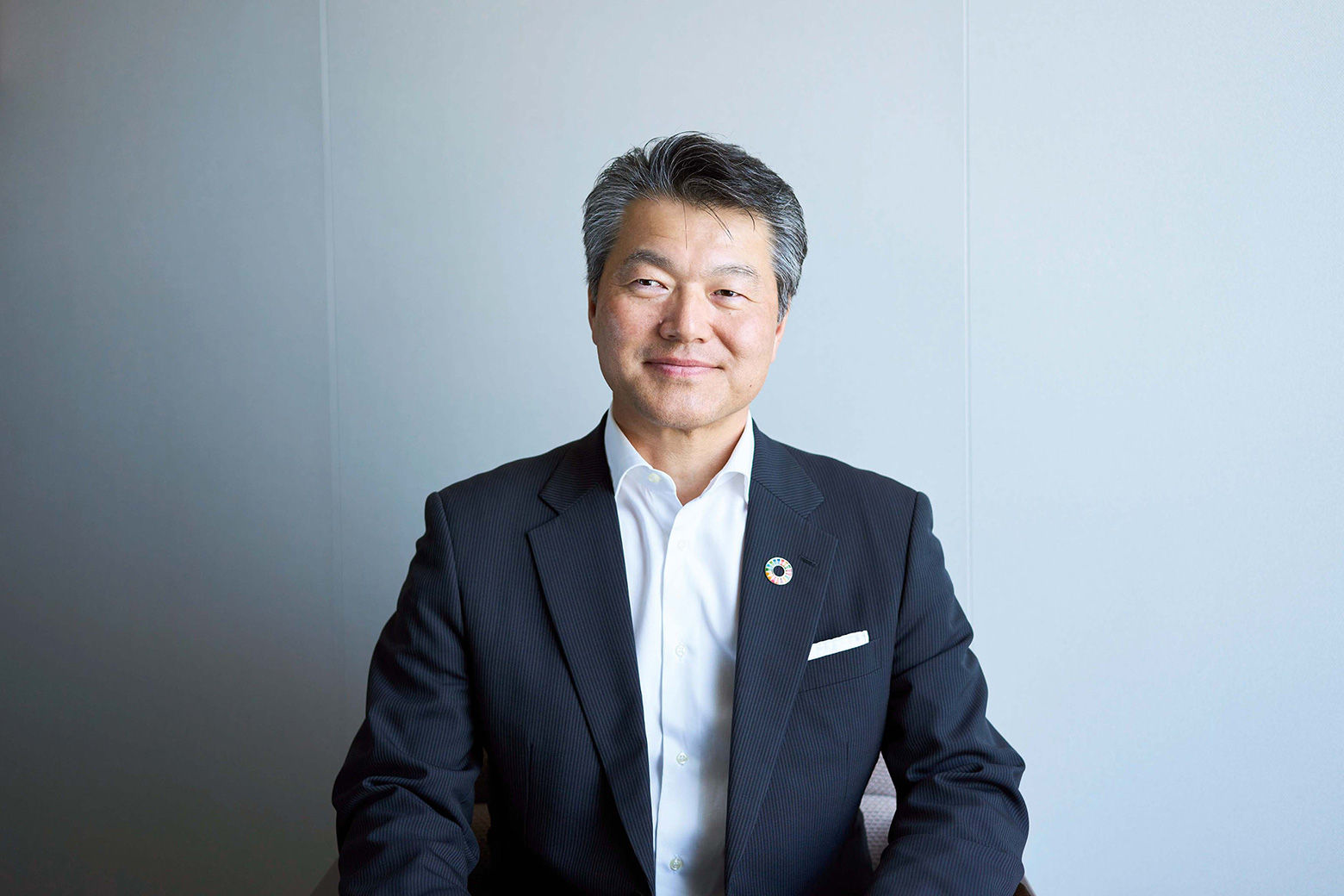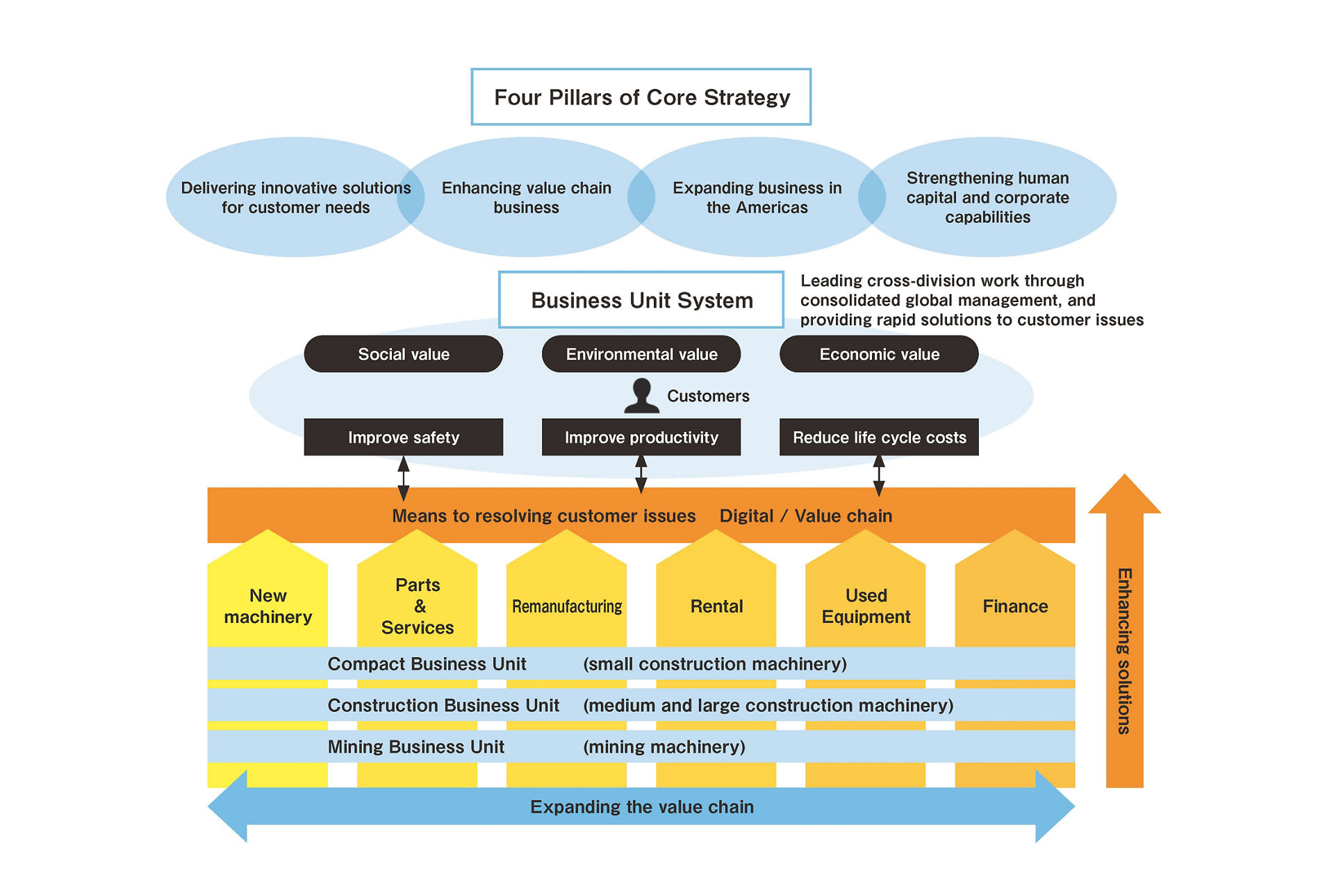Interview with our new President

We should be a pioneer, a solutions provider that leads the way to a new tomorrow for construction machinery
Hitachi Construction Machinery has embarked on the implementation of “BUILDING THE FUTURE 2025”, our Medium-term Management Plan for 2023 to 2025. In this issue, we explore this vision for the future and our continued advancement as a solutions provider that maximizes value for customers. Masafumi Senzaki, the new President of Hitachi Construction Machinery, spoke to us about the aims of the Medium-term Management Plan. Our delivery of innovative frontline solutions for customer needs is already gathering pace. In the second half of this issue, we catch up with members of the mining team to find out more about their latest efforts.

Masafumi Senzaki
Representative Executive Officer, President and Executive Officer, COO
Born in Chiba Prefecture in 1965, Masafumi Senzaki graduated from the Graduate School, Department of Mechanical Sciences and Engineering, Tokyo Institute of Technology in 1991 and joined Hitachi Construction Machinery Co., Ltd. in the same year. He was appointed President and Director of Hitachi Construction Machinery Eurasia Manufacturing LLC in 2012 before becoming an Executive Officer and General Manager of the Marketing Division at Hitachi Construction Machinery in 2018. In 2021, Senzaki was appointed Vice President, Executive Officer, and General Manager of the Corporate Strategy and Operations Management groups. He then became Senior Vice President, Executive Officer, COO, and General Manager of the Corporate Strategy Group in 2022 before adopting his current position in April 2023.
Evolving into Solutions Provider
In 2022, we rebuilt our businesses throughout the Americas, changed the company’s capital structure, and embarked on alliances with new partners. This provided the ideal conditions for me at the start of my tenure as President, and we also began to implement our new Medium-term Management Plan from fiscal 2023. In that sense, I feel a great sense of mission.
Laying the groundwork for innovative solutions
We created our Medium-term Management Plan leading up to 2025 based on a core strategy comprising four pillars: delivering innovative solutions for customer needs, enhancing value chain business, expanding business in the Americas, and strengthening human capital and corporate capabilities. If I were to put our path forward in my own words, I would say it boils down to “continuation” and “evolution.”

In terms of continuation, we opened new doors for business in the Americas in 2022, and carrying on our development in these areas will be crucial. I also look forward to seeing us put more energy than ever into building a sustainable society throughout our value chain, in line with our corporate vision “Ensure a prosperous land and society for the future.”
We must also ensure that Hitachi Construction Machinery Group evolves. “Delivering innovative solutions” serves as a slogan for this work, which is supported by our people and organizations. As a solutions provider, we shall continue to grow as people and as a company in order to demonstrate our true capabilities. The four pillars are interconnected, and I look forward to seeing them lead to our future growth.
Among our various efforts, being a solutions provider is our overarching guiding principle. Two of our key strengths will serve as the foundation for development and growth in this area.
As may be expected, the first of these is reliable hardware. The technology we have built up over more than 70 years is second to none. As a manufacturer of construction machinery, we have provided solutions that go from “manufacturing” to “creating,” and we will remain steadfast in passing this tradition on into the future.
Second, we have the Customer Interest First (CIF) mindset that we have established throughout the company over the course of many years. The processes in which construction machinery is used involve a variety of customer needs, including site safety, efficiency and minimizing life cycle cost. The question is what solutions we can propose in these areas. We plan to further promote the permeation of customer perspectives in our work.
Prior to formulating our new Medium-term Management Plan, we carried out organizational reforms with the aim of better reflecting customer needs. This proved to be a crucial turning point. In fiscal 2022, we established five business units. The Construction Business Unit covers civil engineering and construction sites, Mining is responsible for ultra-large mining machinery, and Compact covers urban civil engineering work. The Parts and Service Business Unit and the Rental and Used Machine Business Unit, meanwhile, are connected to the expansion of the value chain business.
When manufacturers like us focus on being a solutions business, there is a tendency to adopt a structure under which “hard” and “soft” elements are separate. In the past, we had also been operating under an organizational structure that separated machinery development, manufacturing and sales functions. However, taking a step back, it seems obvious that customers working in construction have completely different needs from those in mining, and the approach to solutions and the ideal way of working also changes. We therefore decided to focus on the needs of each customer and create integrated business units capable of providing support across the entire chain, from development to manufacturing and after sales service.
In addition, the New Business Creation Unit, which was established with the aim of generating new business, runs through the business units with a matrix structure that provides flexible lateral and vertical connections.

Growing complexity in the civil engineering and construction market
Construction machinery is required at a wide variety of work sites in fields ranging from road and river infrastructure to residential land development and forestry work. As the range of deployment scenarios grows more diverse, it follows that customers’ needs will also change. Their needs also vary by country. In Japan, for example, there is demand for ICT construction machinery to support labor-saving in response to worker shortages, while customers in Europe are looking for machinery compatible with zero emissions targets and those in developing countries are seeking to reduce life cycle costs. While demand for construction machinery is growing everywhere, our product lineup should cater to these wide-ranging regional differences.
There are also cases that require management of the entire work site, including machinery manufactured by other companies. We developed Solution Linkage as an ICT construction solution that aimed to meet the needs communicated to us by customers, covering elements such as visualization of work sites, progress management, and safety management. We offer a wide range of services, and these solutions have been adopted at numerous work sites. We are also fully leveraging ConSite, a service solution that utilizes big data to monitor the status of machinery, and have established a situation in which our Construction and Compact businesses can offer solutions aligned with customers’ needs.
Offering solution for entire mining operations
In the mining business, we are also looking to implement similar complete solutions enabling total operation management across entire mines, including machinery from other companies. To that end, we are leveraging digital solutions and the products and services that mining operations require, and plan to expand the value chain business in relation to all site operations, from pit to plant.
For example, we have spent several years building a digital platform, using a mine operation management system provided by our Canadian consolidated subsidiary Wenco International Mining Systems Ltd. and our Autonomous Haulage System (AHS). At Hitachi Construction Machinery, we have a dedicated AHS development team of about 100 people, and we provide agile development that sets us apart from other construction machinery manufacturers.
Given that mines are located in harsh environments far from urban centers, securing talent has proven challenging in recent years. In response to this issue, we are accelerating development to achieve even more advanced technology and autonomous driving by implementing remote and automatic excavation for ultra-large hydraulic excavators. We are also moving forward with the development of engineless, full battery rigid frame dump trucks, with demonstration testing at customer mines planned before the end of this fiscal year 2023.
Dump trucks are the largest source of CO2 emissions at mines, and we are confident that the electrification of these vehicles can pave the way to achieving net-zero emissions from mining machinery.
This fiscal year will mark the beginning of significant advancements in the mining business solutions that we have built up over the years.

Achieving the long-held dream of full-fledged expansion in the Americas
Of the four pillars of our Medium-term Management Plan, “expanding business in the Americas” holds particular significance. We began the full-scale expansion of our own business into the region in March 2022, the first step of an independent expansion that our company has dreamed of for some 20 years.
We have set a target of 300 billion yen in revenue from our own businesses in the Americas by fiscal 2025. While this is more than double the figure for fiscal 2022, it is not unrealistic by any means. Our construction and compact businesses in the Americas have built their own sales networks covering about 80% of North America. In the mining business, customers in Central and South America also told us they had been awaiting our arrival. With elements like this, the response feels extremely positive as we look to the future.
We adopted “BUILDING THE FUTURE 2025” as the slogan for our Medium-term Management Plan. Last year was a turning point, during which we opened new doors for business in the Americas and changed our capital structure. In that sense, one could say that we are in the midst of our company’s “Second Start-up.” Each and every person within the company has a role to play in thinking about and implementing a vision for the future that lies before us. At the same time, I want to make sure we have a clear, shared understanding of how we can get there. With that in mind, we have held about 30 caravans with top management for all employees at group companies in Japan and overseas, and are engaging in proactive communication to promote understanding and awareness of the Medium-term Management Plan.
As a company, hardware has always been one of our strengths. However, if we look around us, it’s clear that we are working closely with our customers to meet their needs through both manufacturing and solutions utilizing digital technology in areas such as our mining business. This is a shift from our previous direction, but we should not be afraid of change. I look forward to seeing us set out our own vision for the future, and building that future with our own hands.
Text: Bifue Ushijima / Photos: Mizumasa Wakahara

